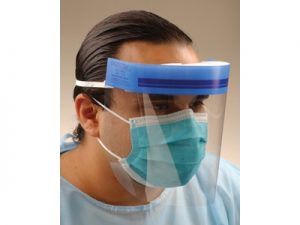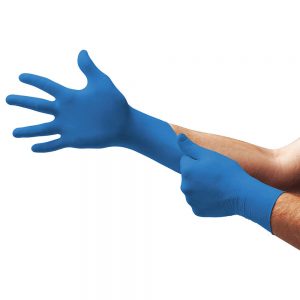Personal Protective Equipment
Hand Hygiene
May 25, 2020Respiratory Hygiene/Cough Etiquette
May 25, 2020Personal Protective Equipment
Personal protective equipment (PPE) refers to wearable equipment that is designed to protect DHCP from exposure to or contact with infectious agents. PPE that is appropriate for various types of patient interactions and effectively covers personal clothing and skin likely to be soiled with blood, saliva, or other potentially infectious materials (OPIM) should be available.  These include gloves, face masks, protective eye wear, face shields, and protective clothing (e.g., reusable or disposable gown, jacket, laboratory coat). Examples of appropriate use of PPE for adherence to Standard Precautions include—
These include gloves, face masks, protective eye wear, face shields, and protective clothing (e.g., reusable or disposable gown, jacket, laboratory coat). Examples of appropriate use of PPE for adherence to Standard Precautions include—
- Use of gloves in situations involving possible contact with blood or body fluids, mucous membranes, non-intact skin (e.g., exposed skin that is chapped, abraded, or with dermatitis) or OPIM.
- Use of protective clothing to protect skin and clothing during procedures or activities where contact with blood or body fluids is anticipated.
- Use of mouth, nose, and eye protection during procedures that are likely to generate splashes or sprays of blood or other body fluids.
DHCP should be trained to select and put on appropriate PPE and remove PPE so that the chance for skin or clothing contamination is reduced. Hand hygiene is always the final step after removing and disposing of PPE. Training should also stress preventing further spread of contamination while wearing PPE by:
wearing PPE by:
- Keeping hands away from face.
- Limiting surfaces touched.
- Removing PPE when leaving work areas.
- Performing hand hygiene.
The application of Standard Precautions and guidance on appropriate selection and an example of putting on and removal of personal protective equipment is described in detail in the 2007 Guideline for Isolation Precautions pdf icon[PDF – 1.4 MB].
- Provide sufficient and appropriate PPE and ensure it is accessible to DHCP.
- Educate all DHCP on proper selection and use of PPE.
- Wear gloves whenever there is potential for contact with blood, body fluids, mucous membranes, non-intact skin or contaminated equipment.
a. Do not wear the same pair of gloves for the care of more than one patient.
b. Do not wash gloves. Gloves cannot be reused.
c. Perform hand hygiene immediately after removing gloves.
- Wear protective clothing that covers skin and personal clothing during procedures or activities where contact with blood, saliva, or OPIM is anticipated.
- Wear mouth, nose, and eye protection during procedures that are likely to generate splashes or spattering of blood or other body fluids.
- Remove PPE before leaving the work area.